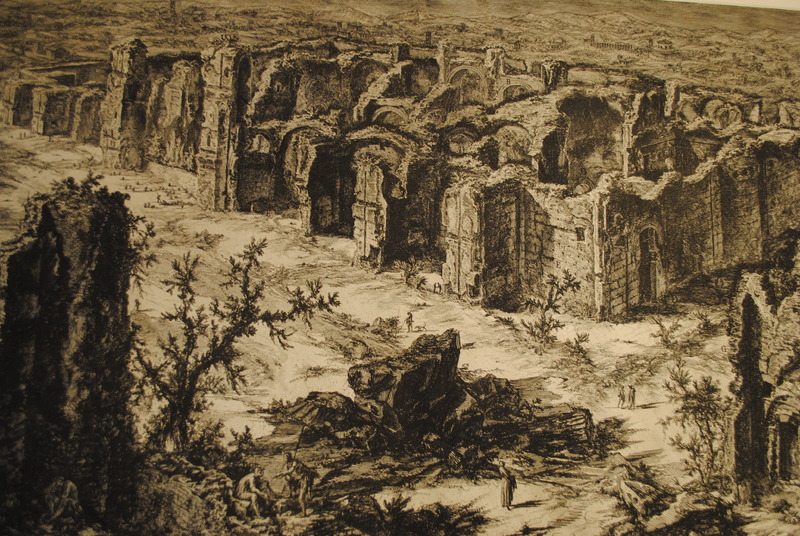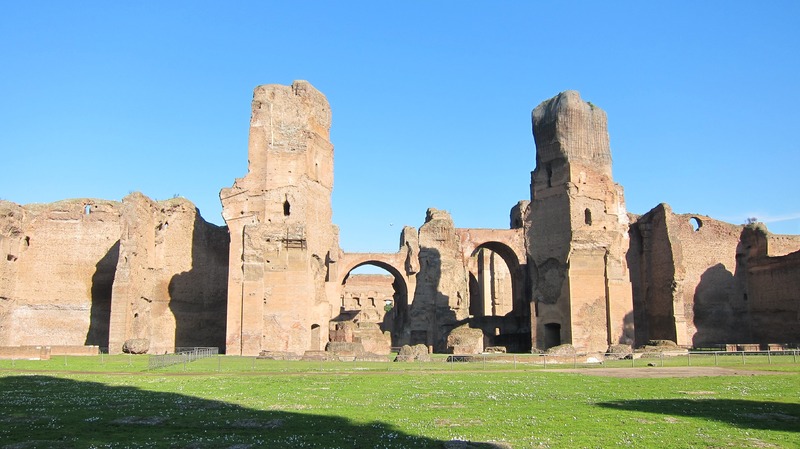Piranesi, Baths of Caracalla

Baths of Caracalla, plate 103 from the series "Vedute di Roma" (Views of Rome), Giovanni Battista Piranesi, 1765. Davis Muesum, Wellesley College. 2004.2

Moden day view of the Baths of Caracalla
The Baths of Caracalla, also known as the Thermae Antoninianae, were completed around 216 CE and were in use for at least 300 years.1 The main two story bathhouse was built by Emperor Caracalla and is pictured in Piranesi’s print. The main bathhouse was surrounded by gardens and exercise areas and was enclosed by a larger rectangular building that had libraries, shops, and offices that were built after Caracalla’s death. The entirety of the grand bathing complex is built upon about 300 acres.2 Baths were an essential part of urban life in the Roman Empire, and while there were hundreds across the city of Rome, imperial baths like the Baths of Caracalla were some of the most spectacular. Baths were places of leisure, where visitors could not only bathe, but also relax, exercise, and socialize with all members of society.
Piranesi portrays the baths as grandiose ruins. He is able to capture the immense structure of the baths while also showing some of the smaller details of the building. The placement of figures really emphasizes the scale of the ruins while also reminding the viewer of the more humble use of the land during the 18th century. He also uses light and darkness to draw the viewers’ attention to the façade and to show the interior of the baths as a mysterious maze of ruins. Overall, Piranesi portrays the baths as a spectacular and mystifying relic of the past.
1Marvin, Miranda. "Freestanding Sculptures from the Baths of Caracalla." American Journal of Archaeology 87, no. 3 (1983): 347-84.
2Yegül, Fikret K. Bathing in the Roman world (Cambridge: Cambridge University Press, 2010), 110.